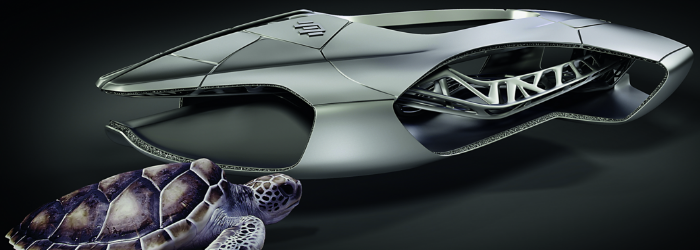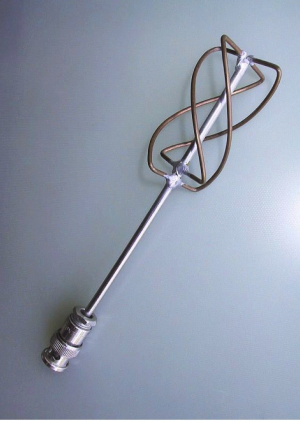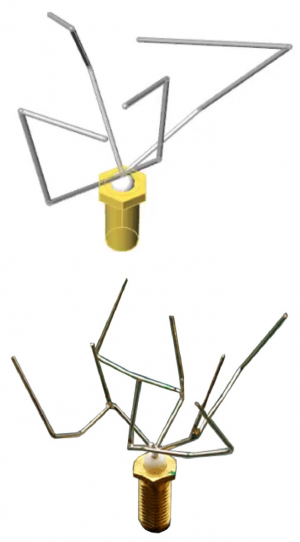
I was first introduced to generative design at Autodesk University 2014 by Autodesk CTO Jeff Kowalski. He talked about how nature is one of the best builders and that we should learn from her. He gave some cool examples but the best was when he tied it to cyber physical systems that determined a bridge needed to be built to optimize traffic and then built the bridge. All this was without human intervention. I know this is a little scary and interesting at the same time but the example is just supposed to be a seed for other practical ideas which can be used today. Since then I have seen several presentations on generative design and also started to think how this would apply in our industry.
What is Generative Design
For those who are not familiar with generative design here is the Wikipedia description:
Generative design is a design method in which the output – image, sound, architectural models, animation – is generated by a set of rules or an Algorithm, normally by using a computer program. Most generative design is based on parametric modeling. It is a fast method of exploring design possibilities that is used in various design fields such as Art, Architecture, Communication Design, and Product Design.
When using generative design we are only required to impose the constraints on the design which are required to satisfy the design goals. So the constraints which we add to the design because of tradition or “best practice” should not be added. The idea behind it is that the more constraints you impose on the design then the less variation can be generated,therefore reducing the effectiveness of the generative design results. The computer will explore a possible solution using the information you inputted, satisfying the constraints you provided. It will iterate the design possibilities while continually validating the results of the new iteration with the previous ones and continue on improving the design. This is very similar to what happens in nature.

1960 NASA antenna design | 
Computer generated design Performance twice as good |
A perfect example of this was an antenna designed by NASA in the 1960s (image on the left above). In the last decade engineers created an algorithm to design and validate via computer analysis thousands of designs. By only entering the real constraints they generated a design on the right. As you can see the design on the right would be something very difficult or impossible for anyone of us to come up with. The generated design performed more than twice as good as the original version. With computer performance going off the charts, a single computer can generate more designs in minutes than we all can in our lifetime. The number of variations to time relationship can even be improved with today’s infinite computing of the “cloud.”
One thing I am uncertain about generative design is if it takes the design aspect away from the designers. My original thoughts was it would because now the algorithm is doing the design and the “designer” is just required to pick the best option or clarify the constraints/requirements. However, many of the presentations about generative design suggest that it does not take away the designing away from the designer. A designer can use generative design to complement their designing ability and adapt it to this new available method. My opinion is that traditional human design makes sense for a design that is meant to be visually appealing; however, for an item which will not have such a requirement like the airbus bionic partition which will be covered with another material, I think there will not be much designing by the designer. I guess the question lies with how you define Design which I definitely do not want to get into now.
How does this relate to Shipbuildling
Generative design is very interesting but how can it be used in our industry? I do think we will be using generative design to design aspects of our ships relatively soon. Actually here at SSI we are still trying to implement the “Build Ship” button in our solution:) and maybe we should investigate using generative design algorithms. However, if we look at other industries I can see that this new trend will affect us very soon. I think there will be several phases on how generative design will be used in shipbuilding.
Components used in our Ships
The first phase will be in components and equipment we purchase and use in our designs. We will have no idea if the item we are using in our ship was actually designed using generative design. All we will know is that the component is lighter, faster, and better than any other and that will be why it is the one we select.
Small Personal Craft
Majority of you are not in the very small personnel craft market but I do see potential in this type of market for generative design. These products are much less complex and can benefit from a model generated with generative design. With a generative design, 3D printing and some new materials newly available, we will be able to design a personnel craft which is good weight/strength ratio, durable and cost effective.
Localized Small Assemblies and Equipment
After some time we will start using this in small assemblies and components which are small local items which can be designed in isolation. This will be similar to what airbus did with the bionic partition as discussed in my previous blog post.
Large and more Complex Items
This is when I think it will get very interesting. An example could be to use generative design to define a shape of the Hull. There are currently many algorithms used in practice to optimize hull designs. To be honest I would say 1/4 of the shipbuilding related presentations I have attended discuss a new concept, algorithm, process, etc. to optimize our ship structure or compartment organization. Almost all these algorithms impose several constraints or make certain assumptions at the very beginning which reduces the amount of variables required to do the calculation. In theory the algorithms we currently use could be using a generative algorithm; however, because we are adding non-required constraints to only reduce the complexity of the problem we are not leveraging what is meant when we say “generative design.”
In this phase we will learn to let go of tradition and only input the true constraints. We will also be forced to use the cloud and its limitless computing power to generate our designs. We will never get to this stage if the algorithms we are using are required to be run on an on-premise computer.
Very Large Components with more Relationships
If this would happen it would not be in the near future. The thoughts I have here are that we would put in the constraints of the entire or at least a substantial portion of the ship and have the generative design produce various results. The type of constraints we would need to be entered would be around function such as capacity/type of cargo, performance and even maintenance along with many, many more. I do not think we would enter constraints such as frame spacing, stock thickness, bracket rules, etc. Instead we would enter load and strength criteria. This would definitely require the class societies to change or adapt their rules. To be honest I am not sure we will ever reach this stage as I would expect that when the technology is ready to support this level of complexity we will have something totally different including what we call a ship.
Closing Remarks
Generative design is really starting to pick up a lot of steam. Autodesk is 100% backing this trend and might actually be driving it with the introduction of their interests in generative design at the Autodesk University 2014. One example is from airbus using generative design to create a bionic partition which is orders of magnitude better than previous designs not using generative design. With this partition being used in their next class of planes definitely demonstrates there is some near future practicality around the hype.
There is no doubt that generative design will affect the shipbuilding industry. The real question is how and when.
I have had very little success finding anyone in the shipbuilding industry who is using generative design; however, with our industry being very tight lipped this does not mean that companies or educational institutions are not experimenting or using it. If any of you are already leveraging generative design in shipbuilding I would love to hear more of your experiences.

